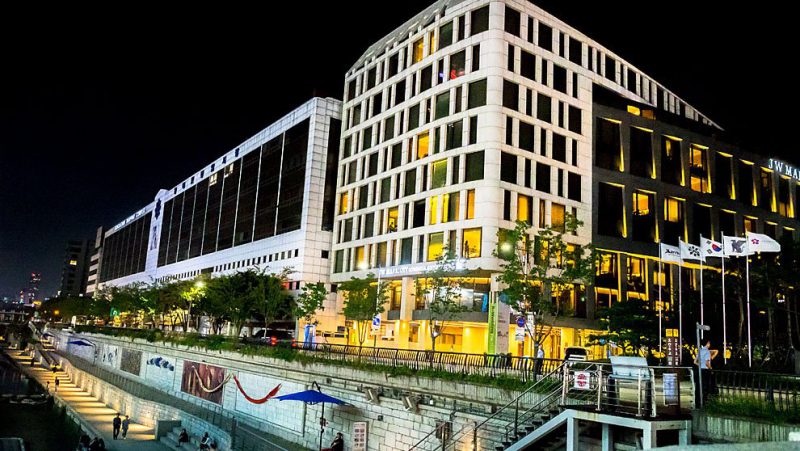Savoring a Taste of Seoul
Seoul presents a feast for the senses for those who can breakaway and explore the city
October 2, 2019

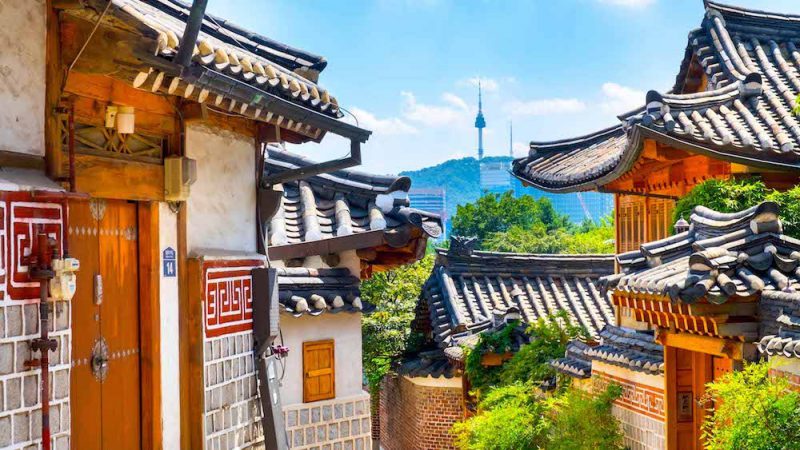
I arrived in Seoul in the pouring rain getting off the airport bus at the wrong stop as I dodged clothing vendors maneuvering my wheelie through the narrow streets of Dongdaemun. A local finally took pity on me and directed me to the JW Marriot where I was staying. And what better way to begin my first evening in Seoul then to wander the small stalls at the market across from my hotel looking for a specific traditional Korean restaurant that Thai, my cousin’s Korean boyfriend diligently searched for with his google maps app.
We were searching for a very specific type of chicken restaurant since Thai reminded us that in Korea there are 50 different ways to make your chicken. The waiter’s first instructions after sitting down was to pick our chicken and our sauce. He then cut it up and slowly began grilling it in front of us. The results were delicious along with the multitude of small plates accompanying the meal. We would find this operation happening at every meal going forward.
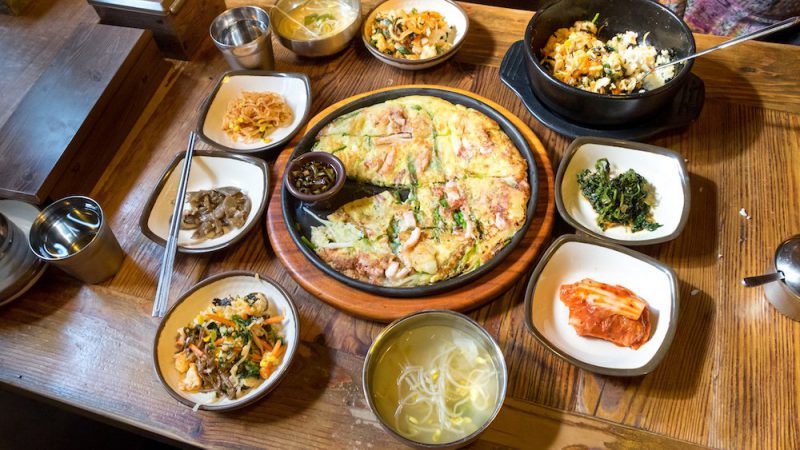
Exploring Seoul
Dongdaemun is the hub and center of the city and the JW Marriot, our hub in Seoul, chose their location well as it is just across from the Great East Gate, which dates from 1398 and is the Eiffel Tower of Seoul. Wrecked originally by fire the gate was restored and rebuilt in 1869. Seoul’s giant gates were once part of a wall surrounding the city. I decided to start my day by walking on this ancient city wall accessible across the street and winding through to Naksan Park for a city view, as well as a museum presenting the history of the restoration. Around Naksan Park there were several colorful street murals and galleries to explore. I returned to Dongdaemun in the afternoon to a large market area called Gwangjang Market that has developed around the gate with local small restaurants and an all-night wholesale fabric market. Around the block is the Dongdaemun Design Plaza, a visually stunning location — especially at night — and includes exhibition spaces, shopping and restaurants. Also Across the street from the JW Marriot and a walk down to below street level is a five-mile pedestrian path that is magical at night.
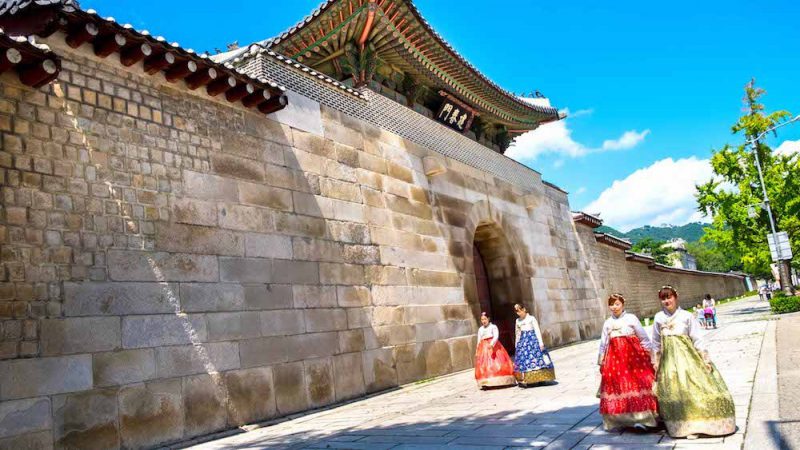
The next day was for Gyeongbokgung , “to be blessed with good fortune,” built in 1392 and serving the royal residence until 1910. It is vast in area and houses both the palace, the National Palace Museum, and the National Folk Museum. I spent hours wandering around all three. The newest craze especially for locals is to rent traditional Korean clothing, which gets you into the sites for free. So it feels as if you are stepping back in time as couples and groups of fleeting ancient wardrobes wander the palace.
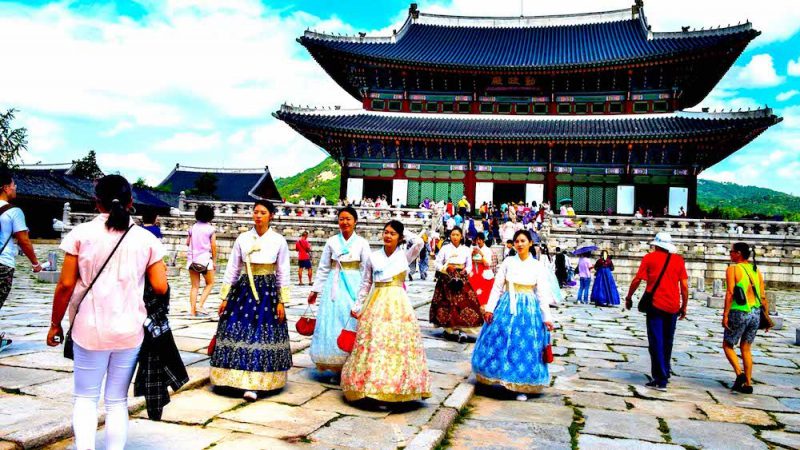
In the afternoon I moved onto Insadong. This neighborhood is the most popular tourist area for eating and shopping and has a local Korean feel about it. You can wander through the small winding alleys looking at crafts, galleries, tearooms and traditional restaurants. I loved this area and had a few meals here. Seoul’s most prominent Buddhist temple called Jogyesa is located off to one side of the area. Although in use you can walk into the temple while people are praying to see the life-size Buddha’s. At the Napcheong Bronzeware I was able to talk with the son of the founder who is carrying on the tradition of making this historic Korean bronze for over 40 years. The only other country that uses the same process is Turkey. The father is 93 and still produces several new items throughout the year.
Namsan rises 860 feet as a mountain and neighborhood in the middle of Seoul. The main attraction here is the iconic Seoul Tower. You can approach it from a cable car or make the slow climb up. There is an observation deck with amazing views and an entire plaza at the base with restaurants and entertainment. I climbed up to the cable car at night and then took it to the top. The views on the way up and at the tower were spectacular and on a clear night you can see all the way to the mountains surrounding Seoul.
The next morning I took the very modern and easy to use subway to Bukchon Hanok Village. This neighborhood is a living museum with only the traditional wooden houses called Hanok throughout the area. It is stepping back in time to walk through the residential neighborhoods. You are allowed to go into some of the old houses to see how people live. There were wonderful traditional tea houses where I stopped for unusual teas and deserts.
We treated ourselves one night to the Tavola 24 restaurant at the JW Marriot. – They specialize in three unique and different cuisines. There is something for everyone from the mudfish soup, king size spareribs, lobster, eel specialty, Asian stir fry, pasta salad, and endless dessert options. Chef Michele and Sous Chef Yoon Ha were nice enough to take the time to give me a tour of the various stations.
Before leaving Seoul, I knew I had to make time to go to one of the many Meerkat café’s spread throughout the city, a highlight for any trip to Seoul. After removing shoes, jackets, bags, and any dangling jewelry, you proceed to the floor in paper slippers. In one area are the Meerkats in a small play. They have no inhibitions and will crawl over, on, and around you in their need to explore. There were also wallabies, raccoons, and Siamese cats playing with each other and the guests if they are being fed snacks. The owners rescued the various animals several years ago and created a harmonious space where they all co-exist – a great way to spend a few hours.
